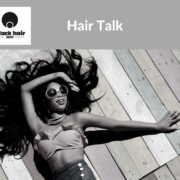Elements of any good weave: Hair Weave Types
With my grade nine grad around the corner, I remember begging my mother for long lush locks. My first weave was long, thick and strawberry blonde. I absolutely loved it, back then anyways. I look at the pictures of that day now and all I think is I wish I knew then what I now know about hair. At the time my knowledge about the vast variety of hair was minimal, maybe non-existent.
When I walked into Images and Shades for the first time I was slightly overwhelmed by all the hair options in front of me. I remember the teller asking me what I was looking for. My reply was long hair, blonde in colour. She continued with her questions: how many inches long are you looking for? Would you rather #22, #24, #27…? I was completely confused. She spent some time explaining the various hair lengths and guiding me through a hair colour chart. She then explained what I now believe to be the most important aspect of any good weave, the type of hair. By type I’m referring to synthetic, human or remy hair. The reality of how clueless I was set it. She quickly pointed out and explained the differences between synthetic and human hair. I opted for the synthetic only because I was on a strict budget and I wasn’t planning on doing much to my weave as far as styling was concerned. Although my weave didn’t turn out badly, it could have been better by simply improving the quality of hair.
Ladies if you’re looking to avoid a bad weave situation, you need to have a good idea of what you want to do with your weave where styling and maintenance are concerned. How good your weave looks is absolutely determined by the quality of the hair installed. As I mentioned earlier there are three basic types of hair, synthetic, human and remy. But what exactly is the difference between them? That’s what I aim to explain with this next part.
Here’s a brief description of each type and what I suggest would work best for certain looks/styles. This also applies to wigs; the hair used to make wigs is the same, they’re just an alternative installation method.
Synthetic Hair
Synthetic hair is a great choice if you’re looking for a new look to last you a short time. Synthetic hair costs anywhere between $15.00- $90.00 depending on the brand and style. Synthetic hair is the most affordable type of hair on the market — ideal for anyone who wants a change without having to break the bank. This type of hair is usually already styled at the time of purchase which eliminates the styling process, saving you money as well as time.
With that said, although synthetic hair is convenient and cost effective, it does have its limits when it comes to being versatile. Synthetic hair is made to look like human hair constructed from thin manufactured hair fibers; therefore, it is not heat resistant to the extent that human hair is. You will not have the ability to curl or straighten this type of hair nor will you be able to dye the hair. There is synthetic hair available that you can apply very minimal heat to but you still won’t get the styling results that you would with other hair types. I personally wouldn’t apply any heat to synthetic hair because of the fear I would have of burning or damaging it.
If you’re considering getting a weave for first time synthetic might be the way to go. You can figure out what you like and decide if you even like having a weave installed, before you fork out the cash for hair of a higher quality.
Human Hair
100% human hair has an elevated natural appearance to it in comparison to synthetic hair. Human hair is great because it replicates natural hair almost perfectly and can last you a few months (approx 6-8 months) with multiple installs, depending on how well you care for it. It will also offer you the versatility that synthetic hair lacks. Human hair gives you the free range to style your weave exactly the way you want. Whether it’s curled or straightened it will withstand the heat applied to it and just like natural hair you have the ability to dye it if you choose to.
However, like anything else, human hair does have its pitfalls. It is a bit more expensive than synthetic hair, running anywhere from approx $50.00-$150.00, again depending on the brand and length. But remember that you are getting higher quality hair. Human hair also has a tendency to tangle and shed; this is because the cuticles are not all facing the same way. Also, human hair is often put through some processing to improve its appearance.
Remy Hair
The hair of all hair types, remy is nothing less than amazing! Sharing similar qualities to that of human hair, remy hair is versatile and natural and undergoes minimal processing. If cared for properly remy hair will maintain its natural movement and appearance from 6 months to over a year. It is also heat resident so applying various styles and dyes will not be an issue. Remy hair comes in various styles such as straight, curly and wavy; it will also return to its natural state after having been styled and washed. You will notice that with remy hair there is virtually no tangling or shedding because the cuticles are kept intact and all face the same direction. When it comes to blending your natural hair, this process is made simpler with remy hair because there are various textures you can purchase. I won’t go into too much detail about them individually but this is where Indian, Brazilian, Malaysian and Chinese remy hair would come into play. That’s another topic for another article.
Some of you may be wondering what the difference is between remy and virgin hair is. Although they are almost identical the biggest difference is that virgin hair is completely 100% natural and unprocessed. Virgin hair has not been processed or dyed and is only available in its natural colour. Virgin hair is always remy hair; however, remy hair may not always be virgin hair.

Source: http://brownsugarbeauti.com/beauti-101-the-difference-between-remy-and-virgin-hair-extensions
So what’s the down fall to remy hair? All this hair goodness comes with a hefty price. Remy can start from about $150.00 per bundle to over $500.00 or more. Again this is dependent on length, brand and if its virgin hair or virgin remy hair. At times, especially if you’ve never purchased hair in the past, the task of choosing the right type of hair may seem challenging. I look at it similar to a trial and error method. It’s about progression; start with the simple and cheapest. Allow yourself time to familiarize yourself with what works and doesn’t work for you and your hair.

Source: http://remigoddesshairextensions.com/index.php?main_page=index&manufacturers_id=4

Source: http://www.hairtiquebymimi.com/product/virgin-brazilian-straight/










Leave a Reply
Want to join the discussion?Feel free to contribute!